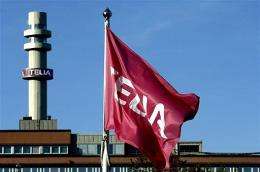A file photo taken in 2006 in Stockholm shows the headquarters of TeliaSonera, a Nordic and Baltic telecommunications company. The Finnish government said Friday it has allocated extra frequencies to telecom firms TeliaSonera, Elisa and DNA to run the country's new, faster fourth-generation (4G) mobile network.
The Finnish government said Friday it has allocated extra frequencies to telecom firms TeliaSonera, Elisa and DNA to run the country's new, faster fourth-generation (4G) mobile network.
"The decision will help to make fast wireless networks more widely available in all parts of Finland," Suvi Linden, Finland's minister of communications, said in a statement.
She added that she hoped that telecommunications companies would start to prepare for the fourth generation technology, which could become available in the next few years.
Telecom operators are working together with handset manufacturers such as Finnish giant Nokia to develop 4G technology.
4G technology allows users to surf the internet or transfer data such as photos or videos more quickly than the current third-generation technology.
The frequencies allocated in Finland are located in the 1,800 megahertz band, which is lower than the fourth generation frequencies given elsewhere in Europe.
Lower frequencies need fewer base stations, which makes building new networks cheaper.
Many of Finland's 5.3 million inhabitants live in rural areas and the government wants to develop better internet access across the country.
Last September, it said it would offer high-speed broadband connections to nearly all over the country by the end of 2015 in an attempt to boost productivity and the quality of life in remote areas.
(c) 2009 AFP




















